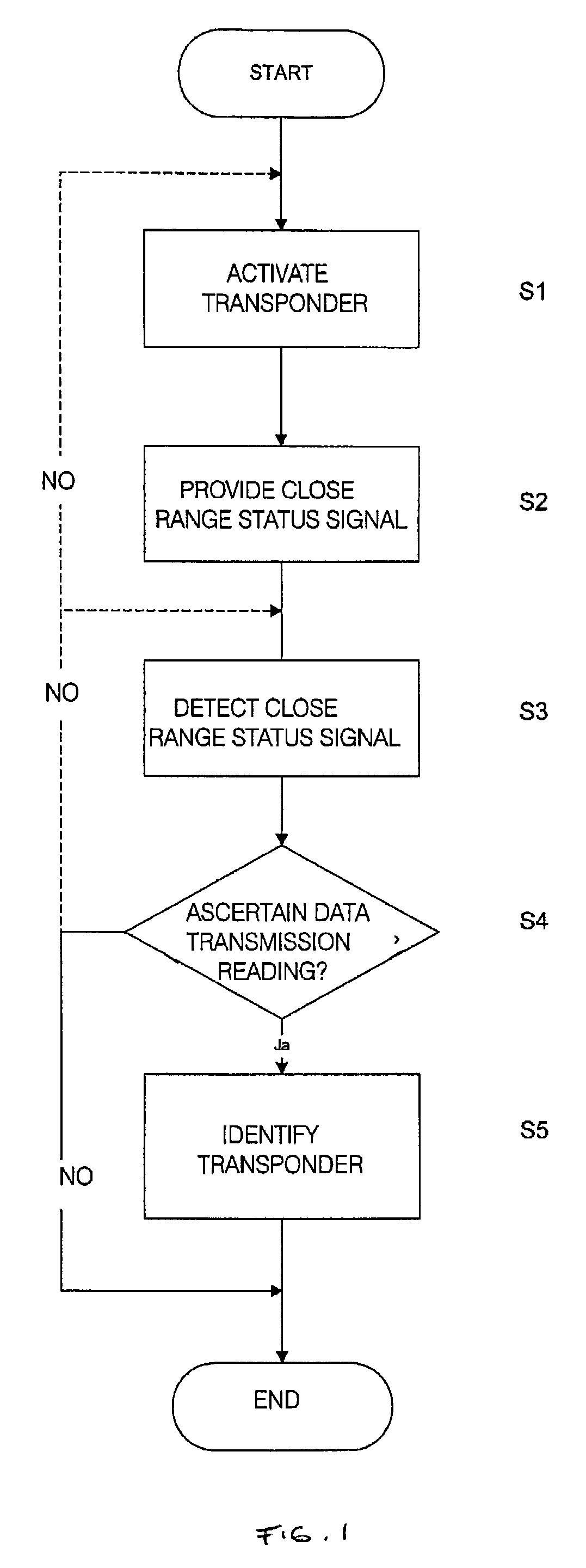Radio Identification With an Additional Close-Range Check
- Summary
- Abstract
- Description
- Claims
- Application Information
AI Technical Summary
Benefits of technology
Problems solved by technology
Method used
Image
Examples
Embodiment Construction
[0047]Firstly, one possible example of embodiment of the method according to the invention will be described with reference to FIG. 1. As shown in FIG. 1, the radio identification method according to the invention proceeds as follows:
[0048]Step S1: Following activation of the reader, the latter transmits a high-frequency signal for activating the transponder (activation signal). When the transponder receives this activation signal, it becomes activated for radio identification in step S1.
[0049]Step S2: The transponder is then in principle activated for radio transmission; however, its data for the identification cannot yet be transmitted since no additional close-range check has yet taken place. To this end, in step S2, a close-range status signal is provided in the close range of the reader, which close-range status signal indicates the close range of the reader.
[0050]Step S3: The close-range status signal is detected by the transponder.
[0051]Step S4: In step 4, a check is made to ...
PUM
 Login to View More
Login to View More Abstract
Description
Claims
Application Information
 Login to View More
Login to View More - R&D
- Intellectual Property
- Life Sciences
- Materials
- Tech Scout
- Unparalleled Data Quality
- Higher Quality Content
- 60% Fewer Hallucinations
Browse by: Latest US Patents, China's latest patents, Technical Efficacy Thesaurus, Application Domain, Technology Topic, Popular Technical Reports.
© 2025 PatSnap. All rights reserved.Legal|Privacy policy|Modern Slavery Act Transparency Statement|Sitemap|About US| Contact US: help@patsnap.com



